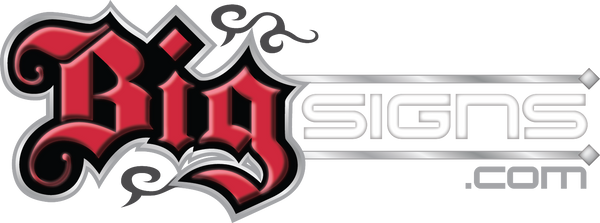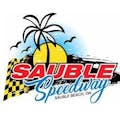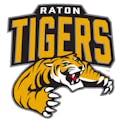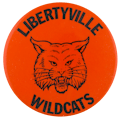
Complete Guide to Construction Site Signage: From Site Safety to Brand Impact
Share
On any jobsite, the very first thing most people notice isn’t the heavy machinery or the skeletal framework of a new building, it’s the construction site signage. Long before the project takes shape, signage creates strong first impressions for the public, reassures clients, and sets the tone for inspectors. It’s the visible promise that the site is organized, compliant, and professionally managed.
The best signage strategies go beyond basic compliance. They combine jobsite safety signs and OSHA-compliant construction signs with clear construction wayfinding signage, ensuring that safety and efficiency work hand-in-hand. This balance between safety, compliance, and a polished visual presentation not only keeps the site running smoothly but also reflects the professionalism of the developer and contractors involved.
And while safety is paramount, signage also serves another critical role: acting as a 24/7 brand ambassador. Branded construction banners and developer branding signage transform barriers, fences, and even cranes into constant marketing touchpoints. Whether it’s day or night, rain or shine, your signage tells the community who you are, what you’re building, and why they should remember your name.
In this article, we will explore the core categories of construction signage, the materials and formats that make the most impact, and how a strategic approach can turn compliance into a powerful branding opportunity.
Key Takeaways
-
Construction site signage is both a safety requirement and a brand-building tool, shaping first impressions for the public, clients, and inspectors.
-
A complete signage plan covers jobsite safety signs, construction wayfinding signage, branding displays, and informational boards.
-
Choosing the right materials from durable mesh banners to weather-resistant rigid boards — ensures long-lasting visibility and compliance.
-
Multi-phase signage strategies maintain consistent public engagement throughout the build.
-
Compliance with OSHA and ANSI standards is non-negotiable, but signage can still be creative and visually aligned with your brand.
- Partnering with experts like BigSigns.com ensures exact color matching, scalable production, and signage that works as hard for your brand as it does for site safety.
Key Types of Construction Site Signage
A well-planned construction site signage strategy covers more than just one type of display. Each category plays a distinct role in keeping the jobsite safe, efficient, and on-brand. From regulatory compliance to community engagement, the right mix ensures that every audience, be it workers, visitors, clients, or the public, gets the information they need.
1. Safety & Compliance Signs
These include OSHA-compliant construction site signage and ANSI-approved visuals that meet strict safety standards. From bold hazard warnings to clear directional signage, these jobsite safety signs reduce risk and ensure everyone understands site rules. Whether it’s marking high-voltage zones or providing PPE reminders, safety signage is non-negotiable for any responsible builder.
2. Wayfinding & Traffic Control
On busy sites, construction wayfinding signage helps keep traffic flowing smoothly. This includes parking instructions, detour notices, and pedestrian guidance signs that prevent confusion and maintain order. By clearly directing workers, delivery vehicles, and visitors, wayfinding signage minimizes downtime and safety risks.
3. Branding & Marketing Signage
Your site can double as a marketing platform. Branded construction banners, custom barricade wraps, and crane signage promote the developer, architect, or sponsors 24/7. This category turns otherwise plain barriers into high-visibility advertisements, building brand recognition throughout the project’s lifespan.
4. Informational Boards
Transparency builds trust. Informational boards display project details, development timelines, and permit information so the community and stakeholders know what’s happening and when. These boards position your project as credible, organized, and accountable.
If you're planning to add your logo or brand messaging to your construction fencing, this guide on customizing construction fence screens with logos will help you navigate compliance and design best practices.
High-Impact Materials & Formats
The effectiveness of construction site signage isn’t just about what it says, it’s also about how well it endures the elements and adapts to changing site conditions. Choosing the right materials ensures your signs remain visible, professional, and compliant from groundbreaking to ribbon-cutting.
Durable mesh banners for fences are a popular choice for large-scale developments. They allow wind to pass through, reducing strain on fencing, while doubling as branded construction banners that showcase your logo, project visuals, or marketing messages.
For permanent or semi-permanent displays, weather-resistant rigid boards are the go-to. Built to withstand sun, rain, and extreme temperatures, these boards are ideal for OSHA-compliant construction signs, directional signage, and informational boards that need to stay legible in all conditions.
When site conditions change frequently, reusable A-frame signs offer unmatched flexibility. Perfect for temporary detours, safety updates, or shifting work zones, they can be moved and updated as needed without compromising clarity or professionalism.
By combining durability with visual impact, the right materials elevate construction signage from a mere requirement to a long-lasting asset.
- Choosing the right materials for construction site signage ensures durability, safety compliance, and a strong visual impact from start to finish.
-
Durable mesh banners – Fence-friendly, wind-resistant, and ideal for branded construction banners.
-
Weather-resistant rigid boards – Perfect for OSHA-compliant construction signs, directional, and informational displays.
-
Reusable A-frame signs – Flexible and movable for detours, safety updates, and changing site needs.
-
Reflective signage options – Enhance visibility at night or in low-light conditions, boosting safety.
-
Eco-friendly materials – Sustainable, recyclable options that meet environmental goals without sacrificing durability.
Building wraps and exterior window graphics can completely transform a construction site’s public-facing appearance, see our full guide on wall wraps and window graphics to explore exterior visual upgrades.
Case Example: Multi-Phase Development Rollout
Large construction projects often span months or even years, making it essential to keep the site visually engaging throughout every stage. A well-planned construction site signage strategy can evolve with the build, ensuring the public remains informed, curious, and connected to the project’s progress.
BigSigns.com offers a durable and impactful windscreen solution, the Dura‑Screen 70, made from reinforced, vinyl-coated polyester. With the capability to withstand the elements and still provide 30% wind pass-through, it's an ideal choice for high‑visibility branding during early excavation stages.
Phase 1 – Excavation: Branded windscreens, such as BigSigns.com’s Dura-Screen 70, are installed on perimeter fencing. These mesh banners allow wind flow while delivering high-impact visuals — showcasing the developer’s logo, project renderings, and essential jobsite safety signs in one cohesive display.
Phase 2 – Mid-Build: As cranes dominate the skyline, large-format crane wraps or building wraps take over. These towering visuals act as both marketing tools and construction wayfinding signage, making the site a landmark that’s easy to spot from a distance.
Phase 3 – Completion: When the final touches are in place, the project is unveiled with a striking banner or rigid board display. This final piece highlights the completed development, acknowledges partners, and cements the brand’s presence in the minds of the community.
By maintaining consistent brand colors, typography, and messaging across all three phases, the site becomes more than just a work zone; it transforms into a 24/7 brand showcase that keeps the public engaged from groundbreaking to grand opening.
Why Developers Trust BigSigns.com
For developers, construction site signage isn’t just a finishing touch, it’s an essential part of the construction process. Partnering with a specialist like BigSigns.com ensures every piece of construction site signage meets the highest standards of quality, consistency, and compliance.
Exact color matching is a top priority for maintaining brand integrity across multiple materials and formats. BigSigns.com uses advanced printing technology to ensure that logos, typography, and brand colors remain consistent whether they appear on mesh banners, rigid boards, or crane wraps.
Their scalable production capabilities mean they can deliver signage for single projects or nationwide developments without compromising turnaround time or quality. From a single jobsite to a portfolio of multi-phase builds, BigSigns.com adapts to the scale and complexity of each project.
Equally important, their designs are compliance-ready, meeting OSHA and ANSI requirements for jobsite safety signs while integrating branding seamlessly. This means developers can focus on building while knowing their signage is both safe and visually on point.
When these elements come together, precision color matching, production at scale, and compliance assurance, developers can rely on BigSigns.com to make their projects look professional, consistent, and memorable from day one to completion.
To get the most out of your site perimeter, consider using graphic fence screens they combine safety, branding, and wind protection in one smart solution.
The Lasting Impact of Construction Site Signage
Effective construction site signage does far more than mark hazards or direct foot traffic — it shapes the way your project is seen from the very first day of excavation to the final unveiling. A thoughtful mix of jobsite safety signs, construction wayfinding signage, and branded construction banners ensures your site is safe, compliant, and visually aligned with your brand at every stage.
For developers, this isn’t just about meeting requirements; it’s about creating a lasting impression that builds trust with the public, strengthens client confidence, and reinforces brand identity.
That’s why many industry leaders trust BigSigns.com Their expertise in exact color matching, scalable production, and compliance-ready designs allows your signage to deliver maximum safety and marketing impact, consistently and reliably. When executed strategically, construction site signage becomes more than a necessity; it becomes one of your most valuable assets in delivering safer, more professional, and more memorable projects.
Frequently Asked Questions (FAQ) About Construction Site Signage
1. What is construction site signage, and why is it important?
Construction site signage includes all visual communication tools used on a jobsite, ranging from construction signs to branded banners. It ensures safety, directs traffic, maintains compliance, and strengthens the site’s professional image.
2. What types of signs are required on a construction site?
Common requirements include jobsite safety signs (PPE reminders, hazard warnings), construction wayfinding signage (traffic control, detours), informational boards (permits, timelines), and branded marketing banners. OSHA and ANSI standards guide safety-related signage.
3. How can signage improve jobsite safety?
By clearly marking hazards, restricted zones, and safety protocols, signage reduces accidents and confusion. Well-placed OSHA-compliant construction signs keep workers, visitors, and the public informed.
4. What materials work best for construction site signage?
Durable mesh banners, weather-resistant rigid boards, and reusable A-frame signs are popular choices. These materials handle outdoor conditions and can be reused or updated as the project evolves.
5. Can construction signage be used for branding?
Yes, branded construction banners, crane wraps, and barricade graphics turn the jobsite into a 24/7 marketing platform, promoting the developer, architect, and sponsors while keeping the site visually appealing.
6. How do I ensure my construction signage meets compliance standards?
Work with providers experienced in OSHA-compliant construction signs and ANSI requirements. They’ll ensure designs meet safety regulations while maintaining brand consistency.
7. What is multi-phase signage in construction?
Multi-phase signage evolves with the build for example, windscreens during excavation, crane wraps mid-construction, and unveiling banners at completion keeping the public engaged at every stage.
8. How long does it take to produce custom construction site signage?
Production timelines vary based on quantity, complexity, and materials. Providers like BigSigns.com offer scalable production to meet tight schedules without sacrificing quality.
9. Why should developers choose BigSigns.com for their signage needs?
BigSigns.com specializes in exact color matching, compliance-ready designs, and nationwide production capabilities, making them a trusted partner for both safety and branding needs on any jobsite
10. What are some best practices for designing effective construction site signage?
Keep messages clear and concise, use high-contrast colors for visibility, include universally recognized safety icons, and ensure the placement is at eye level or in high-traffic areas. Consistency in branding and compliance is key..





























